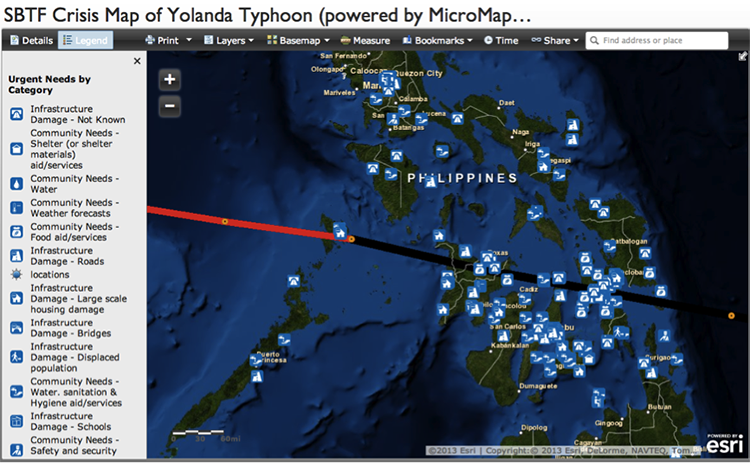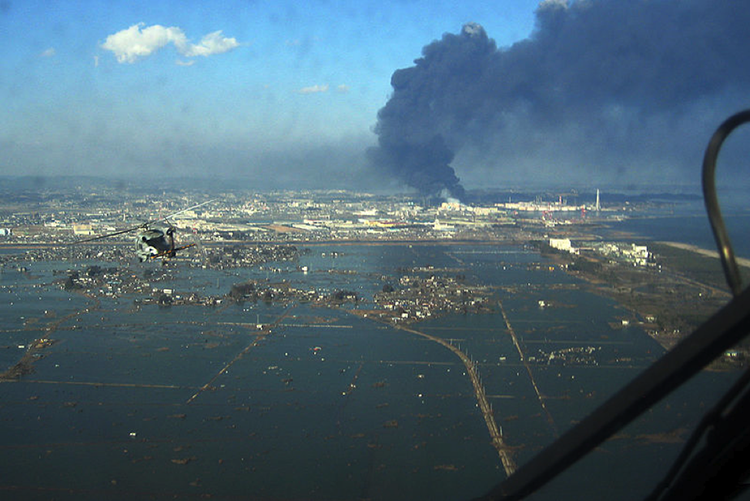Overcoming Response Challenges
While many people and organizations are eager to help in search and rescue activities, numerous challenges occur during this tense period. For example, volunteers from outside the area might have a hard time locating victims or knowing the most urgent needs of local people or communities. Using real-time tools can help address this issue. Disaster victims and other local people should be encouraged to use Twitter, Facebook, or other social media to post search and rescue information. The GPS locations of these social media posts can then be used to create real-time crisis maps, which can help inform rescue personnel which areas to concentrate on. Lack of coordination among organizations from both inside and outside the locale might also occur, and this can waste valuable time – for example, by searching the same place several times for victims. To address this problem, large-scale disasters need an operations office to coordinate the rescue teams. An example of the challenges of search and rescue during the response to Hurricane Katrina is shown in Box 2, taken directly from the White House archives.

Box 2: Search and rescue in the Hurricane Katrina disaster
-
Critical Challenge: Search and Rescue
After Hurricane Katrina made landfall, rising floodwaters in New Orleans stranded thousands on rooftops, requiring a massive civil search and rescue operation. The Coast Guard, FEMA Urban Search and Rescue (US&R) Task Forces, and DOD forces, in concert with State and local emergency responders from across the country, courageously combined to rescue tens of thousands of people. With extraordinary ingenuity and tenacity, Federal, State, and local emergency responders plucked people from rooftops while avoiding urban hazards not normally encountered during a waterborne rescue.
Yet many of these courageous lifesavers were put at unnecessary risk by a structure that failed to support them effectively. The overall search and rescue effort demonstrated the need for greater coordination between US&R, the Coast Guard, and military responders who, because of their very different missions, train and operate in very different ways. For example, Urban Search and Rescue (US&R) teams had a particularly challenging situation since they are neither trained nor equipped to perform water rescue. Thus, they could not immediately rescue people trapped by the floodwaters.
Furthermore, lacking an integrated search and rescue incident command, the various agencies were unable to effectively coordinate their operations. This meant that multiple rescue teams were sent to the same areas while leaving others uncovered. When successful rescues were made, there was no formal direction on where to take those rescued. Too often, rescuers had to leave victims at drop-off points and landing zones that had insufficient logistics, medical, and communications resources, such as atop the I-10 cloverleaf near the Superdome.
-
Lessons Learned
The Department of Homeland Security should lead an interagency review of current policies and procedures to ensure the effective integration of all Federal search and rescue assets during disaster response.
As the tsunami or storm surge disaster unfolds, emergency workers need to help make sure survivors have access to water, food, shelter, medical care, and sanitation. Depending on the scale and location of the disaster, each of these needs may present significant logistical challenges. People displaced from their homes have no access to these essential needs, and even families whose homes were not destroyed may not have water (due to contamination or pipeline disruption) or food (due to supply chain interruption and loss of refrigeration from electricity outages). The number of injured may exceed the capacity of existing medical care facilities, and those facilities themselves may be damaged, destroyed, or without power in the wake of a tsunami or storm surge. Damage to water and sewage infrastructure may also create a risk of outbreaks of diseases such as cholera, which emphasizes the need for repairing critical infrastructure as quickly as possible.

